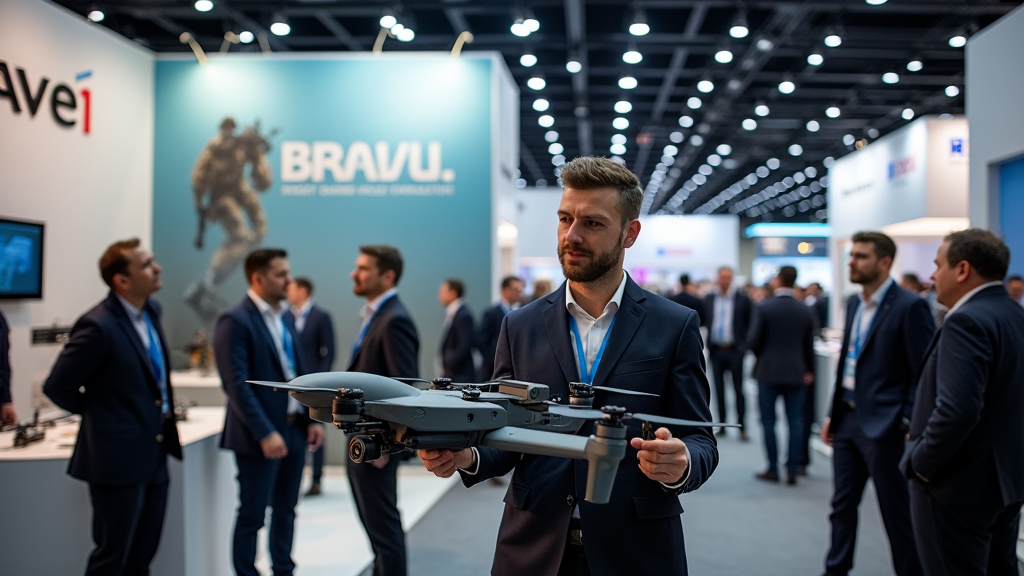Ukrainian Drone Innovations: Collaborative Operator-Manufacturer Communication Strategies
Innovative Collaboration in Ukrainian Defense Technology
In recent years, Ukraine has become a hub for innovative defense technology, particularly in the realm of drone warfare. A key factor in this rapid technological advancement has been the collaborative innovation between operators and manufacturers. This feedback loop ensures that the drones are exceptionally reliable in battle. Ukrainian companies like Vyriy and Sine.Engineering have developed their technologies driven by real battlefield needs. For instance, Vyriy’s Molfar FPV drones have gained acclaim for their reliability when deployed in swarms, while Sine’s development of non-GPS navigation systems addresses the severe jamming challenges faced on the frontlines.
Rapid Prototyping
One of the hallmarks of Ukraine’s defense innovation ecosystem is rapid prototyping. Initiatives such as the Brave1 project, a government-supported defense cluster, are pivotal in bridging the gap between manufacturers and military units. This collaboration facilitates the testing of advanced technologies like repeaters and optical stabilization modules, enhancing drone range and resilience. The iterative process ensures that these drones can withstand the harsh conditions of electronic warfare environments.
Technological Adaptations to Meet Battlefield Challenges
Ukraine’s drone manufacturers have made significant strides in adapting their technologies to counter electronic warfare measures effectively. Vyriy, for example, employs sub-1 GHz frequencies for its drones to evade Russian jamming tactics, sacrificing some data speed but significantly boosting reliability. Sine.Engineering’s time-of-flight navigation system, which operates independently of GPS, exemplifies Ukraine’s commitment to overcoming obstacles posed by electronic disruption. Likewise, optical odometry technologies have been integrated into drones, enabling them to lock onto ground markers and function seamlessly without reliance on GPS, which is often compromised by enemy jamming.
Scaling Production Capacity
The rapid transition from prototype to mass production is another testament to Ukraine’s burgeoning defense sector. Companies supported by the Brave1 initiative have successfully scaled up operations, achieving a remarkable ability to produce thousands of drones monthly. This scalability is crucial for maintaining a steady supply of effective defensive technologies to the frontlines.
Key Industry Insights
The collaborative environment nurtures a culture of timely innovation and adaptive design. Sine.Engineering CEO Andriy Chulyk emphasizes the importance of field knowledge, stating, “Knowing the battlefield is critical to designing technology for a war.” This principle of integrating operator feedback into design and development processes helps ensure the technology remains relevant and effective.
Similarly, a statement from the Brave1 cluster highlights the necessity of robust communication systems: “Uninterrupted communication between the operator and the drone is the key to successful operations.” Such insights underscore the strategies driving the technological capabilities that define Ukraine’s defense apparatus.
Verification and Future Directions
While there are anecdotes of direct communications such as texting and FaceTime between operators and manufacturers, explicit mentions of these personal communication methods in sources are limited. Nevertheless, the well-documented partnerships and institutional frameworks like the Brave1 network support the notion of close coordination between developers and military forces.
In terms of technological focus, fiber-optic drones have been confirmed as a core area of production, although direct linking of these to operator feedback still warrants thorough documentation. The continual investment in such technologies points to a future where interoperability and real-time responsiveness to battlefield needs are prioritized.
Conclusion
The Ukrainian defense sector exemplifies a model of decentralized innovation, significantly contributing to its reputation as a leader in drone technology. By continually integrating frontline feedback into design processes, leveraging advanced adaptive technologies, and ensuring productive scalability, Ukrainian manufacturers have positioned themselves as pivotal players in the modern battlefield. Emphasizing technologies like the Molfar drones and Sine’s swarm systems, and infrastructure support like Brave1’s, the pattern of rapid iteration and collaboration sets a powerful precedent for defense industries worldwide.
References for Further Reading:
latest video
news via inbox
Subscribe to the latest news in the world of politics and technology







